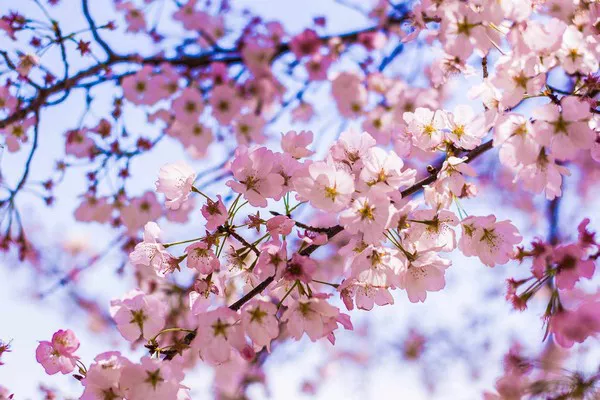Flowers, with their vibrant colors and captivating scents, are not merely decorative ornaments in nature but are fundamental components of the reproductive processes of many plants. From the delicate petals to the intricate reproductive organs hidden within, flowers possess a remarkable complexity that facilitates the perpetuation of plant species. Understanding how flowers reproduce is not only fascinating but also crucial for comprehending the intricate workings of ecosystems and agriculture. In this article, we delve into the mechanisms and processes by which flowers reproduce, shedding light on the marvels of floral biology.
The Anatomy of a Flower
Before delving into the intricacies of floral reproduction, it is essential to grasp the basic anatomy of a flower. While the appearance of flowers may vary widely among different plant species, they typically consist of four main parts: sepals, petals, stamens, and pistils.
1. Sepals: These are the outermost parts of a flower, usually green in color, and serve to protect the developing bud.
2. Petals: Often brightly colored and fragrant, petals attract pollinators such as bees, butterflies, and birds. They also play a role in protecting the reproductive organs of the flower.
3. Stamens: The stamens are the male reproductive organs of the flower, consisting of a filament and an anther. The anther produces pollen, which contains the male gametes or sperm cells.
4. Pistils: The pistil is the female reproductive organ of the flower, comprising the stigma, style, and ovary. The stigma is the receptive surface for pollen, while the style connects the stigma to the ovary, which contains the ovules, the structures that develop into seeds after fertilization.
Pollination: The Transfer of Pollen
Pollination is the process by which pollen is transferred from the male reproductive organs (stamens) to the female reproductive organs (pistils) of a flower, enabling fertilization and seed production. There are two main types of pollination: self-pollination and cross-pollination.
1. Self-pollination: In self-pollination, pollen is transferred from the anther to the stigma of the same flower or another flower on the same plant. While this method ensures reproductive success, it may result in reduced genetic diversity within a population.
2. Cross-pollination: Cross-pollination involves the transfer of pollen from the anther of one flower to the stigma of another flower on a different plant of the same species. This process promotes genetic diversity by facilitating the exchange of genetic material between individuals.
Pollination can occur through various mechanisms, including wind, water, and animal vectors such as insects, birds, and mammals. Many flowers have evolved adaptations to attract specific pollinators, such as producing nectar, mimicking the appearance of female insects, or emitting enticing scents.
Fertilization: Union of Gametes
Following successful pollination, the pollen grain germinates on the stigma, forming a pollen tube that grows down through the style towards the ovary. This tube delivers the male gametes (sperm cells) to the ovules housed within the ovary. Fertilization occurs when a sperm cell fuses with an egg cell within an ovule, resulting in the formation of a zygote, the first cell of the new plant embryo.
Seed Development and Dispersal
Once fertilization has taken place, the ovule develops into a seed, containing the embryonic plant and a store of nutrients to support its initial growth. The ovary surrounding the seed may also undergo changes, forming a fruit that encloses and protects the seeds. Fruits play a crucial role in seed dispersal, as they are often eaten by animals or carried away by wind or water, allowing the seeds to be dispersed over a wide area and colonize new habitats.
Reproductive Strategies in Flowers
Flowering plants have evolved a diverse array of reproductive strategies to ensure the successful reproduction and propagation of their species in various environments. Some plants are self-compatible, meaning they can self-pollinate and produce viable seeds without the need for cross-pollination. Others are self-incompatible, requiring cross-pollination to set seeds due to mechanisms that prevent self-fertilization, such as self-incompatibility systems or physical barriers between the male and female organs.
Additionally, some plants exhibit specialized reproductive mechanisms, such as cleistogamy, where flowers remain closed and self-pollinate without ever opening, or apomixis, a form of asexual reproduction where seeds are produced without fertilization. These strategies allow plants to thrive in specific ecological niches or ensure reproductive success under challenging conditions.
The Importance of Floral Reproduction
Floral reproduction is not only essential for the survival of individual plant species but also plays a crucial role in maintaining ecosystem health and biodiversity. Flowers provide food and habitat for a wide range of organisms, including pollinators, herbivores, and predators, forming intricate ecological networks that support life on Earth. Moreover, many of the fruits, vegetables, and grains that humans rely on for food are produced by flowering plants, highlighting the economic significance of floral reproduction in agriculture and food security.
Understanding the mechanisms of floral reproduction also has practical applications in plant breeding, horticulture, and conservation efforts. By studying the genetic basis of traits related to flower morphology, pollination biology, and seed development, researchers can develop improved crop varieties, enhance ornamental plants, and conserve endangered species.
Conclusion
Flowers are not just beautiful adornments in nature but are essential structures that enable the reproduction and perpetuation of plant species. The intricate processes of pollination, fertilization, and seed development represent a fascinating intersection of biology, ecology, and evolution. By unraveling the mysteries of floral reproduction, we gain deeper insights into the workings of the natural world and the interconnectedness of all living organisms.


